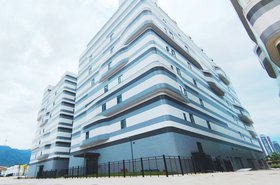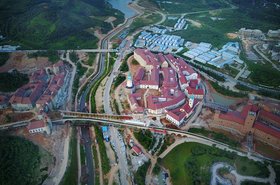Despite not submitting its supercomputers for the Top500 biannual ranking contest, more details have trickled out about China's secret exascale supercomputers.
In October, The Next Platform reported on the two supercomputers capable of more than one exaflops (1018 floating-point operations per second) - making them the most powerful supercomputers in the world.
At the time, the publication reported that both systems were capable of around 1.3 exaflops peak performance with 1.05 exaflops of sustained performance.
Now, Asian Technology Information Program founder David Kahaner has revealed more information on the systems during a presentation at SC21. Some of the information matches what is disclosed in peer-reviewed papers on research carried out on one of the systems. HPCwire said multiple sources corroborated the core details presented by Kahaner.
In his presentation, Kahaner said that the Sunway OceanLight supercomputer is indeed around 1.3 exaflops peak/1.05 exaflops sustained.
However, he claimed that the second supercomputer, the Tianhe-3, is capable of 1.7 exaflops peak/1.3 exaflops sustained. “We were just told the day before yesterday that the first Linpack run gave them these numbers, 1.3 exaflops (HPL)," said Kahaner.
"This particular facility might be more open to people outside China. I hope it is.”
The increase in power is because the supercomputer was only fully completed at the end of last month, while the earlier report was based on an incomplete system. The Tianhe-3 is based on a Phytium 2000+ FTP Arm chip plus a Matrix 2000+ MTP accelerator.
Kahaner also revealed the existence of a third exascale supercomputer planned for the National Supercomputing Center in Shenzhen. Capable of two exaflops, it was planned for 2022 - but will likely be delayed.
The system was meant to use Sugon’s Hygon CPU, a Chinese-made AMD x86 CPU. But that would have been licensed through AMD’s joint venture with THATIC, which was added to the US Entity List in 2019. Earlier this year, Depei Qian of Beihang University said that Sugon would use a new version of the CPU and a Hygon 'DCU' (akin to a GPU) - but Kahaner claims that it unlikely such a change could be completed any time soon.
In addition, China is developing another two National Supercomputer Centers, in addition to its existing eight. Further, a number of large multi-hundred petaflops systems are either already secretly in production or set to launch soon.
HPCwire claims that two systems were provisionally submitted to the Top500 back in 2019, and benchmarked at ~260-petaflops and ~315-petaflops, but they were withdrawn from the list before it was published.
Had they ranked, they would have been the world's most powerful supercomputers at the time, ahead of the US government's 148.6 petaflops Summit. Currently, the world's fastest supercomputer on the Top500 is the 442 petaflops Fugaku.
Officially, China's most powerful supercomputer is the 93 petaflops Sunway TaihuLight.
The US is soon set to launch its own exascale system - one that it has called the first exascale supercomputer in the world. At 1.5 exaflops (likely 1.3 sustained performance), Frontier will be the world's second most powerful supercomputer, after Tianhe-3. Work is currently underway installing the 29MW system. It will soon be joined in the US by the oft-delayed 2 exaflops Aurora supercomputer, and in 2023 by the 2+ exaflops El Capitan system.






